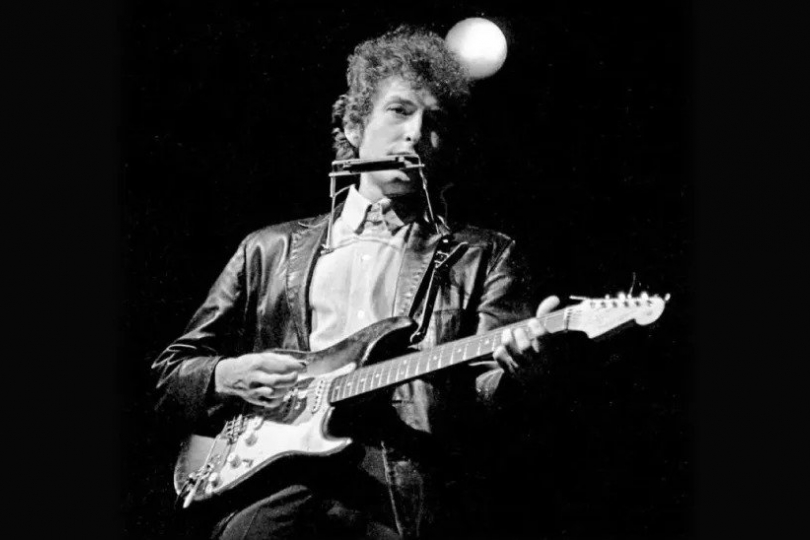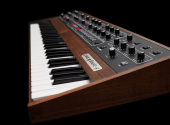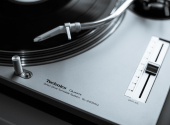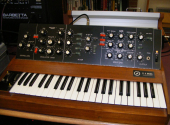
The Gear That Made Us #3: The Fender Stratocaster
Brought to market in 1954, the Fender Stratocaster has enabled many a guitarist to make their mark on popular music for decades. Join me in this article to explore some of the more notable hits that feature its versatile sound, as well as a closer look at just why it is enjoyed by so many in the third installment of The Gear That Made Us.
Loud and proud
Although he sadly passed away at the young age of 22 on what is now known as "The Day the Music Died" in 1959, it was rock ‘n’ roll pioneer Buddy Holly who opted for the Fender Stratocaster as his signature guitar when he got together the $249.50 needed for his purchase at Harrod Music in Lubbock, USA. While Holly is said to have chosen the guitar for its loud sound, today there are a wide range of genres and styles that seem to lend themselves well to the versatile instrument. Back then, it was undoubtedly something a bit different though it was only after Holly and The Crickets appeared on The Ed Sullivan Show in 1957 when many Americans first set eyes on the now ubiquitous "strat" through their television sets.
Like many guitars, the item starts off life as a block of wood before being cut, screwed, buffed, and tuned. Typically, the body is made from alder wood which helps to provide the instrument with great bite and a snappy sound. What perhaps made the Fender Stratocaster noticeably appealing from the get-go was that it was comfortable to hold and allowed for a broad palette of tones. Of course, it shouldn’t be forgotten that timing played a big part too due to the rise of new genres building momentum at a similar time to when Leo Fender and his associates were designing it.
Turning up the juice
Another notable guitarist who was a regular user of the Fender was Jimi Hendrix. Regarded as one of the most influential guitarists in the history of popular music, he was also one of the first to use fuzz distortion and wah-wah. This exploration of sound helped to show off the guitar in a different, more prominent light and would later go on to influence many more players. As his sole hit that reached number one in the UK singles chart, the track "Voodoo Child" highlights the more experimental usage of the stratocaster as seen in the video below.
A little more innovation, a little less action
Another major aspect of the Fender Stratocaster was the possibility for a "whammy bar" or tremolo arm to be used with the guitar. This is essentially a lever that can be attached to the bridge to allow a guitarist to modulate the tension for a brief time, creating a vibrato, portamento, or pitch bend effect. This new technique lent itself perfectly as a simpler method to create these sounds in genres like blues and jazz, though since those early days many leading guitarists—including David Gilmour and Jimmy Page—have capitalized on the variation of tone that the tremolo arm allows for. Today, there are a number of different tremolo mechanisms that can be used on a guitar, though it was Fender who first introduced the tremolo arm which later became the most liked and copied version.
Another aspect of the Stratocaster was that it had a third or additional pick-up when compared with the earlier Telecaster. Using the three-way selector switch, guitarists were able to activate two pick-ups at the same time (using the middle pick-up alongside either the neck or bridge) enabling even more tonal choices and resulting in a somewhat "out of phase" sound. Musicians like Hendrix are said to have even placed a match into the switch cavity to enable this—creativity it seems is never in short supply for some!
Taking on a life of its own
It is interesting to note that as the Fender Telecaster had already been released two years prior in 1952 by Leo Fender (we will be covering this other important guitar in a future article), the original guitar was actually built primarily for country musicians. Whether it was down to the more comfortable nature of using the instrument plus the improved design, its simple look, the additional sounds that could be achieved, or possibly a mixture of all aspects, it is hard to say—but what is clear is that many key musicians seem to have an affinity for the instrument.
Today there are a myriad of Fender Stratocaster types and styles to choose from. Everything from the "Fat Strat" with a humbucker pick-up at the bridge to signature models from guitarists like Eric Clapton and Mark Knopfler as well as more affordable Fender Squires.
So what do you think of the Fender Stratocaster? Does it deserve to be so widely well-received as it is today? Let us know in the comments below.
If you have found an error or typo in the article, please let us know by e-mail info@insounder.org.





